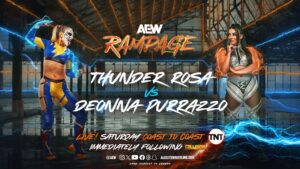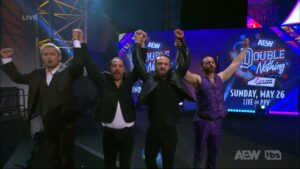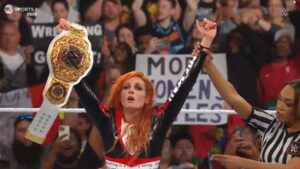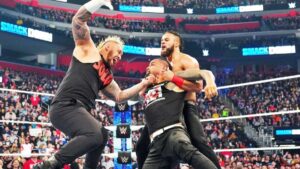This week’s edition of AEW Dynamite brought the heartbreaking loss of ‘Hangman’ Adam Page and his Dark Order buddies, courtesy of Kenny Omega’s Elite Squad. Missing out on the huge opportunities at stake made the loss even tougher for the good guys and the loyal fans. And that is nothing but evidence of how dear the fans have held these wrestlers. Or even precisely–these AEW babyfaces.
For long, there have been a ton of misconceptions regarding the creation of typical babyfaces in the world of pro wrestling. One would usually assume that portraying a wrestler as an underdog in a feud is the sole manner of building the “fan-favorite” babyfaces. Although that may prove to be an effective method to do so, establishing a formidable protagonist in kayfabe has much more to it. And as modern-day professional wrestling is gaining a much-anticipated momentum by breaking all defined stereotypes, one North American promotion has not failed in constructing a prominent line of babyfaces. Let’s see how AEW has achieved this milestone.
Long-Term Storytelling With AEW Babyfaces
Since its inception back in January 2019, All Elite Wrestling has proved itself to be a strong competition to the existing juggernaut of WWE. With its constantly expanding roster, the promotion has maintained the fine line of separation between heels and faces. Wrestlers like Maxwell Jacob Friedman, Ethan Page, FTR, and Nyla Rose have stood up to the expectations of bringing the perfect heelish taste to the ring. On the other hand, AEW babyfaces like Cody Rhodes, Darby Allin, Eddie Kingston, Jungle Boy, Adam Page, Tay Conti, and Hikaru Shida appeal to the audience- with their gullible, ingenious, and sometimes naïve characters. However, the secret weapon behind their captivating characters doesn’t lie in the quick two-minute promos or the segments with wordy battles. Not even in their fast-paced, non-repetitive matchups, but in their long-term storytelling.
Darby Allin got his first shot at the AEW World Championship when he won a contender match against Jimmy Havoc. AEW took the risk of putting the young, lesser-known Allin in front of the veteran, in-ring general Chris Jericho. They could’ve easily vouched for Havoc to pick up the win, but put their confidence and trust in Allin. The company began building Allin not as a skinny, pale underdog, but as a bold, relentless fighter. With this push and a couple of brilliant storylines against Team Taz and The Inner Circle, or alongside Jon Moxley and Sting (just to name a few), Allin massively developed into a household name. When his entrance song hits a houseful arena, the pop that he receives surely tells us how successfully he has been established as an incredible babyface.
The In-Ring Talent of AEW Babyfaces
Proper booking alone can not always save a career. There needs to be the presence of apt talent and skills within the concerned wrestler. There’s no doubt that AEW possesses an abundance of skilled professionals at the moment. The same goes with both ‘Hangman’ Adam Page and Jungle Boy. These are two masterpieces that AEW has woven intricately into storylines filled with crests and troughs. The sharp, witty glimpses that fans remember as memorable moments successively repeat themselves, which keeps the momentum going for these wrestlers.
Adam Page was never incompetent; neither was he a weakling compared to any of his opponents. His aggressive yet righteous attitude towards wrestling draws him as a top star. Fans across the globe have witnessed his specialized in-ring action against greats like Chris Jericho, Kota Ibushi, Kenny Omega, Matt Hardy, and many others. The only way AEW made him look like a genuine babyface was by letting The Elite betray and kick him out, leaving him vulnerable.
Similarly, Jungle Boy was never portrayed as a debilitated fighter protected by a dinosaur (Luchasaurus, obviously) and Marko Stunt. Instead, he was showcased as the boy with a fighting spirit and golden locks, who would sweep over the crowds with his charisma and determination. Even though he’s still a young star, he has already added several remarkable matches to his resume. Although he may have lost some of the crucial matches in his AEW career, he has still managed to garner people’s attention as a hardworking babyface. That is the key to enchanting the audience.
Unscripted Promos
Wrestlers have brains of their own, which counters the exact purpose of handing them similar scripts that they’ll memorize and rant like idiots. Providing them with the liberty to choose their own words and bring their distinctive style to the arena creates an enormous difference. Orange Cassidy won’t look good if he’ll offer raw, heated promos like Eddie Kingston. Fans wouldn’t applaud Christian Cage if he would leave his iconic veteran style at his old home. Nobody would care for Jon Moxley if he’d never take up the heroic violence. And Sting wouldn’t suit beside Allin if he’d not take up the student-mentor alliance. Each wrestler brings with himself/herself a different story that needs to be shared with the world. And given the proper built-up, platform, and storylines, each story plays out to its epitome.
Take the example of Moxley’s revolutionary run as the AEW World Champion. Not only does his star power and history with WWE attract the viewers, but also his top-notch promos. Had it not been for his daggered words, his journey throughout the empty arena era would’ve felt a tad less impactful. Babyfaces need to express themselves to the crowds for getting people to care for them. Letting the fighters weave their own stories turns things more intriguing and realistic.
Tomorrow, Dark Order takes their rightful place at the top. #FightForTheFallen pic.twitter.com/WZZpnyQLNA
— EVIL UNO of DARK ORDER (@EvilUno) July 28, 2021
Heel to Face Transition
Another notable aspect of AEW’s booking is its smooth transitioning between heels and faces. To shift a wrestler’s momentum from good to bad seems simpler than the other way round. A frustrated babyface makes for a better heel because he has a reason and motive. But for a heel, things might get a bit twisted, forcing us to think more rationally than emotionally. AEW has found their way through this conundrum, as has been proved by the terrific criticism received by the likes of Sammy Guevara, Eddie Kingston, Pac, Lance Archer, Ricky Starks, and the entire Dark Order. The seamless transformation of their gimmick styles progressed through weeks of slow, burning development in their characters, thus resulting in another exemplary example of long-term storytelling.
Back in November 2019, the heel Dark Order was an experimental failure. People booed them over their complicated and rather puzzling promos. They were clearly directionless then. Soon enough, the AEW creative boosted them with a leader as great as the late Brodie Lee, and new additions in Preston Vance, Colt Cabana, and Anna Jay. Fast forward to 2021, the All Elite fans shower this faction of AEW babyfaces with love and sentiment. This is the power of absolutely clever and tactful booking.
In Closing
AEW has perfected the art of building the faces of tomorrow. The flawless mix of unscripted promos, varied wrestling styles, and richly developed characters has helped the promotion in bringing affection from the fans worldwide. Whatever the promotion does next with these stars, provided it follows the set pattern, it will ultimately add up in making pro-wrestling unmissable.
Stay tuned to the Last Word on Pro Wrestling for more on this and other stories from around the world of wrestling, as they develop. You can always count on LWOPW to be on top of the major news in the wrestling world, as well as to provide you with analysis, previews, videos, interviews, and editorials on the wrestling world. You can catch AEW Dynamite Wednesday nights at 8 PM ET on TNT and AEW Dark: Elevation (Monday nights) and AEW: Dark (Tuesday nights) at 7 PM ET on YouTube.






